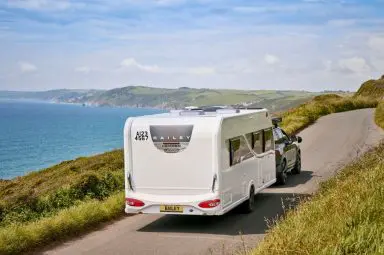10 slow pace UK holiday destinations to visit this year

The UK is full of places that lend themselves to this gentler way of travelling. If you’ve got a caravan, motorhome or campervan, the choice of bases is even better, especially with Club sites that give you peace of mind and comfort built in.
Here are ten spots that reward the unhurried approach. Each one has a trusted Club site nearby, ideas for slow-burn days, and practical tips that keep that relaxed pace even when you’re on the road.
1. North Norfolk Coast
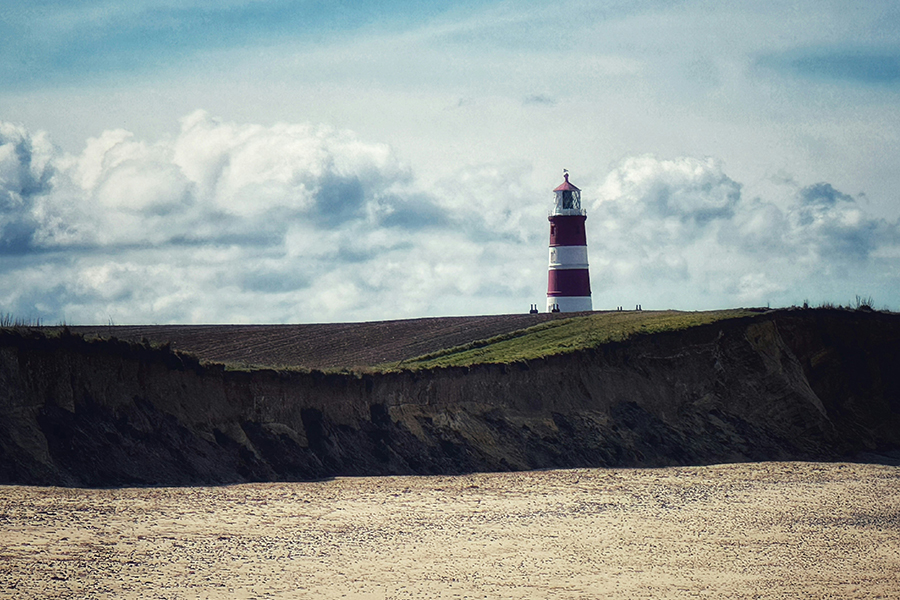
The north Norfolk coast and coastal towns have a way of making you breathe a little deeper. The beaches stretch out wide and the pace in the villages is measured.
A few day trips to consider are:
- Seal trips at Blakeney and Morston: These are always talked about, but the trick is to pick a midweek afternoon, check the tide times, and book the smaller boats. You’ll avoid the big coach groups, and if you take a windproof jacket, you’ll be far more comfortable when the boat heads out past the sandbanks.
- The Deep History Coast trail from Cromer to Weybourne: This is an easy walking trail and well signposted. If you set off just after the tide starts to fall, you’ll get more space to explore the foreshore without the soft sand slowing you down.
- The Bittern Line train between Sheringham and Cromer: This is worth a ride. It’s only 10 minutes, but it saves you the car parks and gives you an easy linear walk along the promenade with crab sandwiches waiting at either end.
Base yourself at Incleboro Fields (Caravan & Motorhome Club)
The Club site itself sits on a rise above West Runton, with rail access and wardens who, according to recent reviews, go out of their way to help.
2. Northumberland
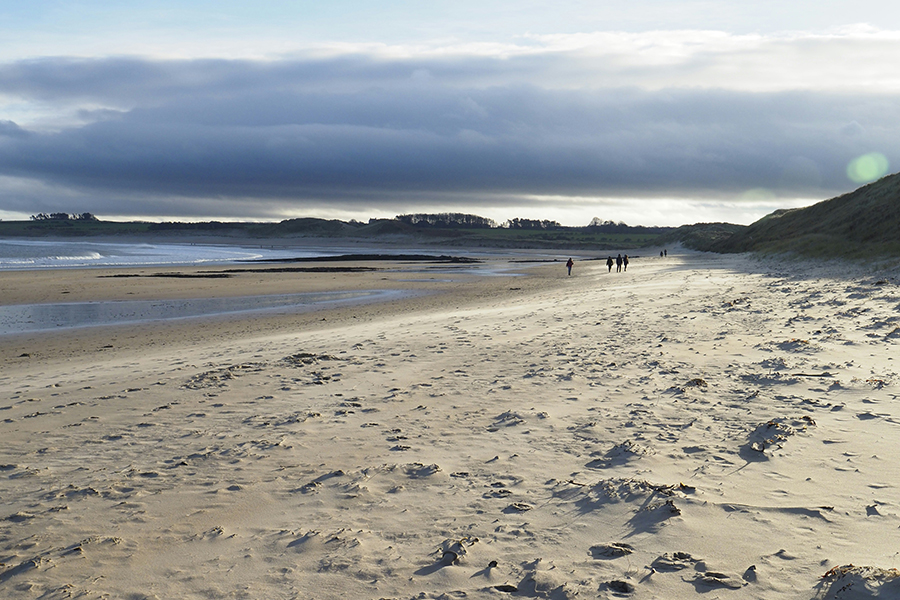
This stretch between Embleton and Low Newton is a tonic if you like a wide beach with barely a soul on it.
- Walk to Dunstanburgh Castle: From Craster you can walk to Dunstanburgh Castle along a grassy cliff path that’s not too taxing. If you go in the late afternoon, you’ll avoid the crowds and get the best light.
- Low Newton: This has a little bird hide by the village pond. It’s flat, sheltered, and a good spot to linger with binoculars.
- The Embleton–Newton circular walking trail: This keeps you on firm dune tracks, so you’re not trudging through deep sand. It drops you nicely back at the square where the pub serves local produce, ale and seafood.
Base yourself at: Dunstan Hill (Camping & Caravanning Club)
Visitors often describe the site as tranquil and perfectly placed, with pitches that stay peaceful even in high season.
3. The Scottish Borders
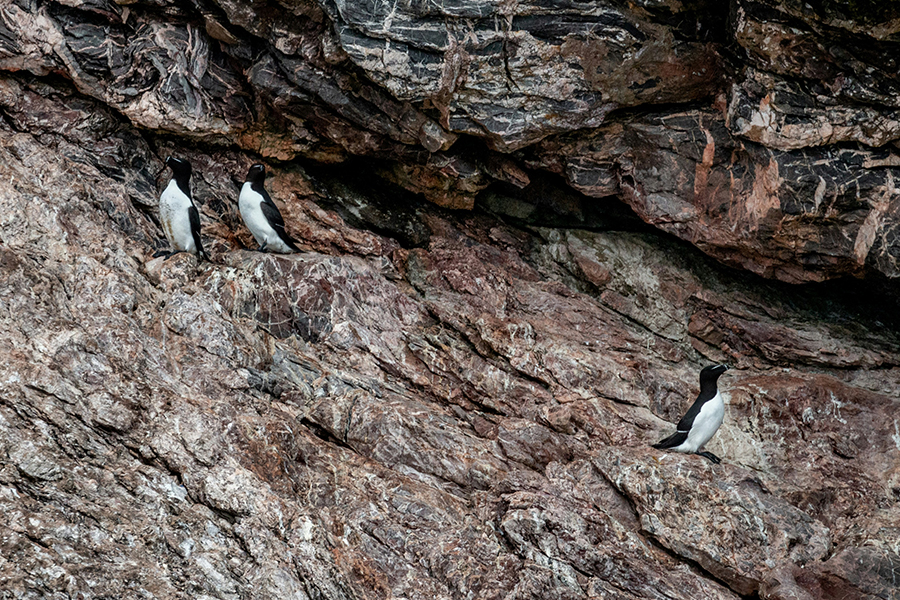
Melrose feels like it’s built for unhurried days. You can park up and hardly need the car.
- The St Abb’s Head nature reserve: This is a short drive but worth every mile. There’s an easy path that gives you a full sweep of the cliffs without much climbing, and if you carry binoculars, you’ll see guillemots, razorbills and sometimes dolphins.
- In town: The Melrose Abbey loop pairs history with gentle riverside walking. Add a café stop and you’ve got a full morning without effort.
- Eildon Hills Circuit: For those with a bit more energy, the Eildon Hills circuit can be cut short by skipping the summits. That way you still enjoy the scenery without punishing your knees.
Base yourself at: Melrose Gibson Park (Caravan & Motorhome Club)
Being right in the centre of Melrose, the site means you can walk to dinner or just sit out with a glass of wine after a day’s exploring.
4. Somerset Levels
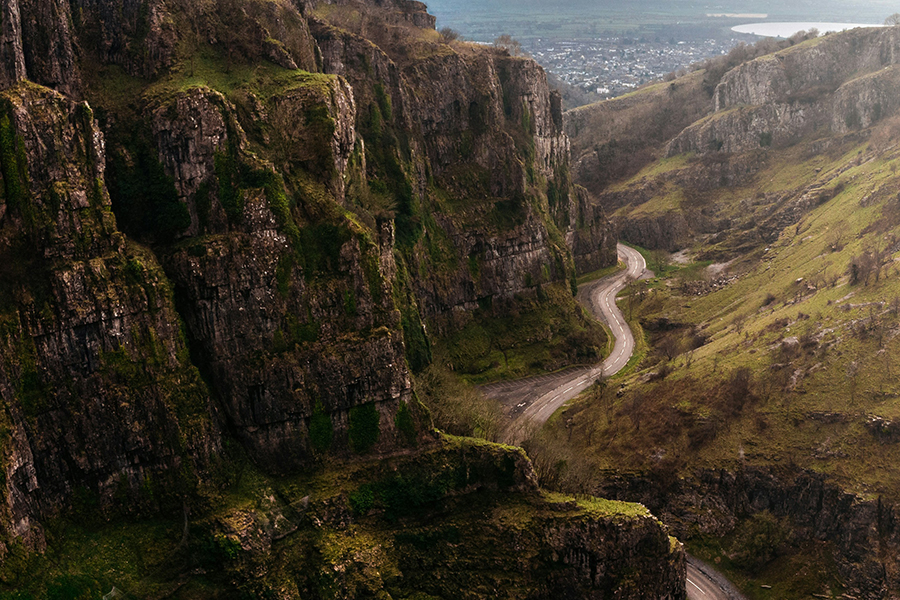
Somerset isn’t all about cheddar cheese and the gorge. The Levels have a much slower rhythm.
- Avalon Marshes: In winter, these are extraordinary. Get there an hour before dusk, park at Shapwick Road, and you can watch starlings pour in until the sky ripples black.
- Wells Cathedral: The Cathedral rewards an early morning visit when the cobbles are still quiet. On market days, the whole close fills with stalls, and it’s a handy wet-weather plan if the Levels are too muddy.
- The top of Cheddar Gorge: This stunning place a short path that runs along the rim from a north-side car park. It gives you the views of rolling hills without the punishing Jacob’s Ladder steps.
Base yourself at: Cheddar Mendip Heights (Camping & Caravanning Club)
The Club site near Priddy gets strong feedback for being a calm base, with handy flat pitches if you don’t fancy levelling ramps.
5. Ceredigion Coast
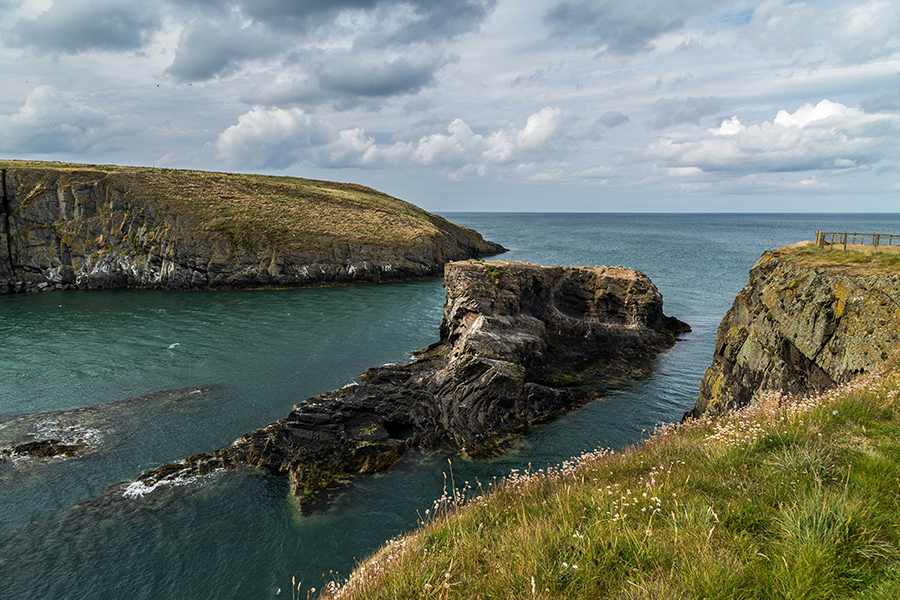
The pace along this part of west Wales is famously relaxed.
- New Quay harbour: Grab a flask and sit on the wall. On calmer mornings, you’ll almost always see dolphins, and you don’t need to fork out for a boat trip unless you want to.
- Aberaeron to Llanerchaeron path: This walking trail is level, signposted, and drops you right at a National Trust walled garden and villa. It’s a half-day outing without moving the van.
- Teifi Pools: Up in the hills, the Teifi Pools are reached by a simple lane drive. Park and wander as far as you like; it’s wild and remote without big climbs.
Base yourself at: Cardigan Bay (Camping & Caravanning Club)
Reviews suggest the site is especially good if you pick a non-electric pitch away from play areas for a quieter stay.
6. Suffolk Heritage Coast
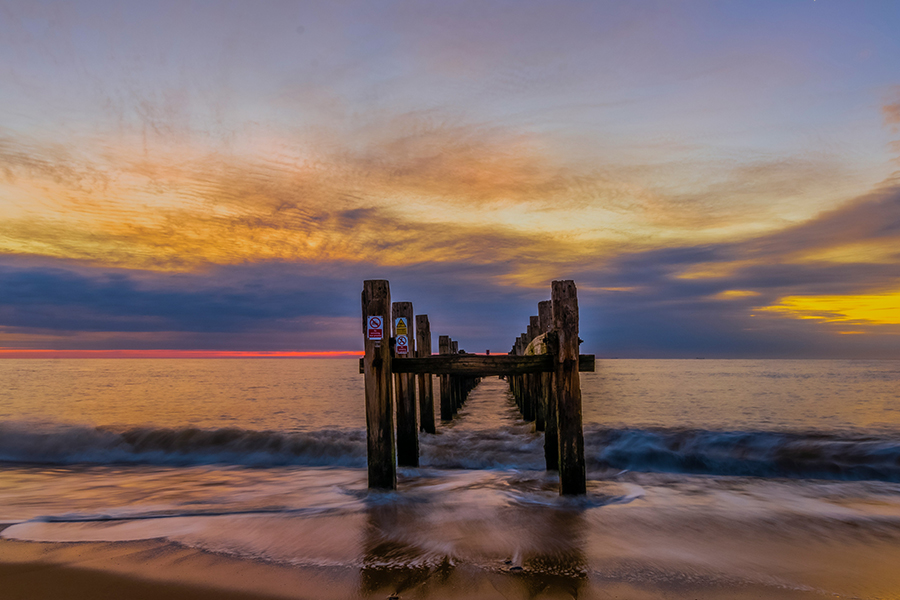
This is a coast for those who like it understated.
- Benacre and Covehithe: These beaches are best tackled on a falling tide when the sand firms up. You’ll often have the place to yourself except for a few dog walkers.
- RSPB Minsmere: This works best if you start at Island Mere hide, which is smaller and quieter than the main scrapes. Bring a cushion for the wooden benches, and you’ll last much longer.
- Orford Ness: This is only open on limited days, and the ferry seats fill quickly. Pre-book and wear sturdy shoes; the shingle can be hard going otherwise.
Base yourself at: Kessingland (Camping & Caravanning Club)
The Club site is praised for its handy access to both coast and reserves.
7. Lincolnshire
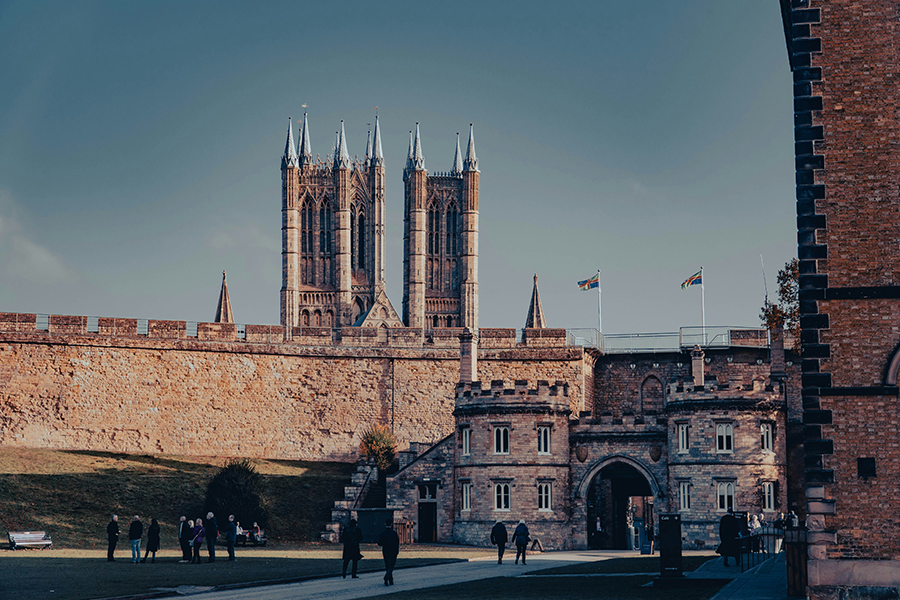
If you’re after flat horizons and big skies, this is the spot for you to consider a road trip.
- The Donna Nook seal colony: In November and December, this is a sight to see. Get there early on a weekday with a long lens, and you’ll avoid the busier weekends.
- The Sutton-on-Sea promenade: This has frequent benches and cafés, making it easy to potter without pushing yourself.
- Louth: A trip to Louth on market day mixes produce shopping with a short wander around the Georgian streets.
Base yourself at: Sutton-on-Sea (Caravan & Motorhome Club)
Lincolnshire is famously without a motorway, so the pace is slower even on the roads. Reviews of the Club site highlight its tidy facilities and peaceful feel.
8. Exmoor
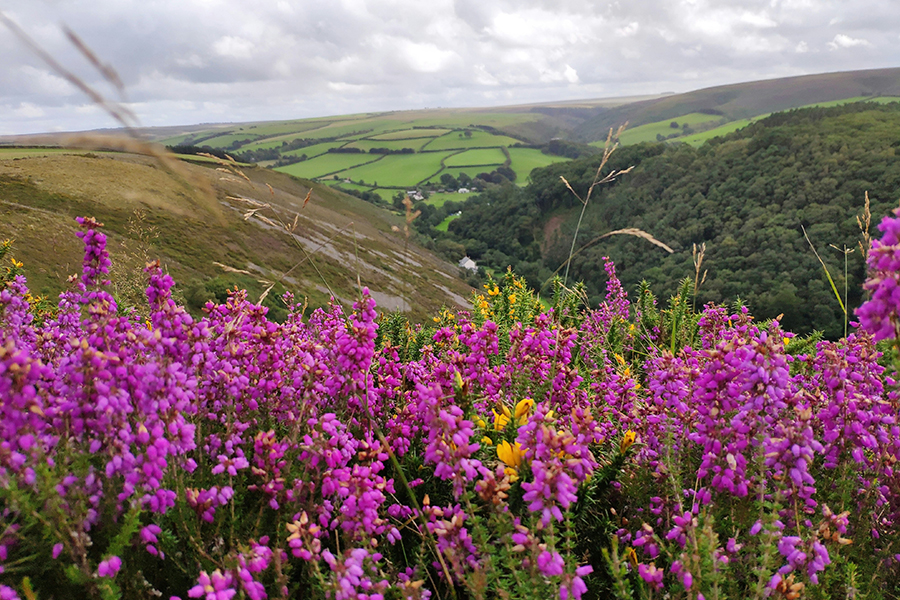
Dulverton makes a lovely base, with bookshops, independent shops, cafés and riverside paths right on the doorstep.
- Tarr Steps: The Tarr Steps clapper bridge is best reached from the top car park, avoiding the steeper approaches. Walking sticks help if it’s been raining.
- The Heritage Centre in Dulverton: This pairs nicely with a riverside loop for a lazy half-day.
- Wimbleball Reservoir: This has easy sections of path that let you get close to the water without tackling the whole circuit.
Base yourself at: Exmoor House (Caravan & Motorhome Club)
Exmoor House is often praised for its quiet, central location and friendly wardens.
9. Herefordshire
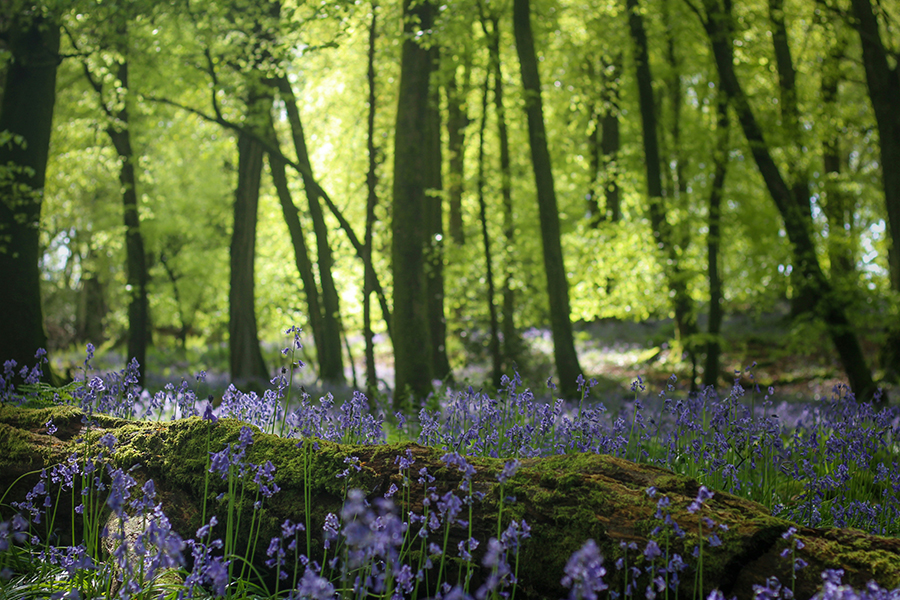
This is England at its most quietly charming.
- The Black-and-White Village Trail: This is best done by car, stopping to stretch your legs in Weobley or Pembridge. Plan for a tearoom or two along the way.
- The Wye Valley greenway: This has flatter sections near Biblins, where you can enjoy the river without steep climbs.
- Local orchards: In autumn, many orchards offer tastings if you ring ahead. September and October are the best months.
Base yourself at: Hereford (Camping & Caravanning Club)
The Club site sits just outside the city, handy for Hereford Cathedral and the Mappa Mundi if the weather turns.
10. The Gower Peninsula
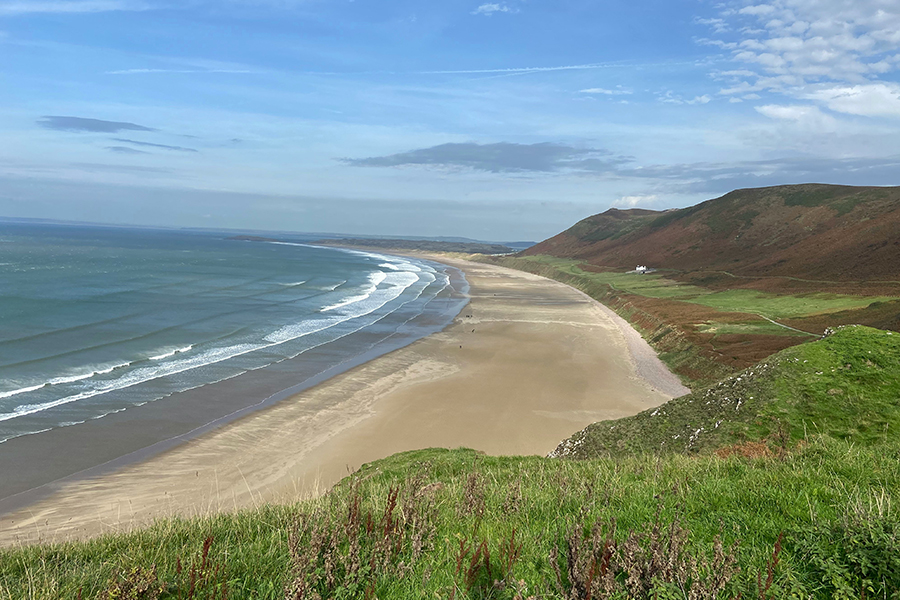
The Gower was the UK’s first Area of Outstanding Natural Beauty, and it shows.
- Rhossili’s headland: This gives you a world-class view with only a short level walk from the car park. You don’t need to drop down to the beach unless you want the climb back up.
- Nicholaston Woods: From Oxwich, wander into Nicholaston Woods along sandy tracks shaded by trees. It’s gentle, scenic and great for a hot day.
- The Mumbles promenade: This is flat and lined with benches. On breezier afternoons, it’s the ideal place to settle in with an ice cream and watch the waves.
Base yourself at: Gowerton (Caravan & Motorhome Club)
The Gowerton site gives you easy road access to both sides of the peninsula, with reviews noting its straightforward approach and good transport links.
A few more tips
Aside from our top tips based on locations, here are a few more that you may not have thought of to guarantee you get a relaxing, slower-paced holiday:
- Pitch for peace, not just convenience: When you check in, ask which pitches are furthest from the play areas, service blocks or road edges. Perimeter pitches near hedgerows often have less through-footfall and are quieter in the evenings.
- Use tide tables and market days to set your rhythm: Coastal walks are easier on a falling tide when sand is firm, while many small towns come alive on specific market days. Build your days around these natural and local cycles instead of a rigid itinerary.
- Carry a lightweight shooting stick or folding stool: Saves your knees on heritage trails and bird hides where benches aren’t guaranteed. It’s one of those things that makes a long wait for wildlife or a slow-moving guided tour far more comfortable.
- Book “shoulder days” at Club sites: Arriving on a Tuesday or Wednesday usually means fewer arrivals and departures, so sites feel calmer and you’re more likely to have a choice of pitch.
- Keep a pack of £1 and £2 coins: Many village car parks and honesty-box gardens haven’t switched to apps. Having a little coin purse avoids dealing with poor signal or card machines.
- Use the site wardens as local guides: Warden teams often know which tearooms still serve after 3pm, the best public transport routes, when’s the best time to explore an attraction or which pubs are award-winning and mobility-friendly. A quick chat at reception can save wasted journeys.
- Use OS Maps offline on a tablet: Many heritage or coastal spots have weak signal. Downloading routes in advance gives you confidence to explore without worrying about getting stuck in a dead zone.
Ready to slow things down on your next travel experience?
Take a look at the latest Bailey of Bristol caravans, motorhomes and campervans to find the perfect fit for your travels, or head to our blog for more holiday inspiration.
Latest news & events
See all news & eventsCaravan Tech Annual Open Weekend
Caravan Tech, Merriments, Hawkhurst Road, Hurst Green, East Sussex

